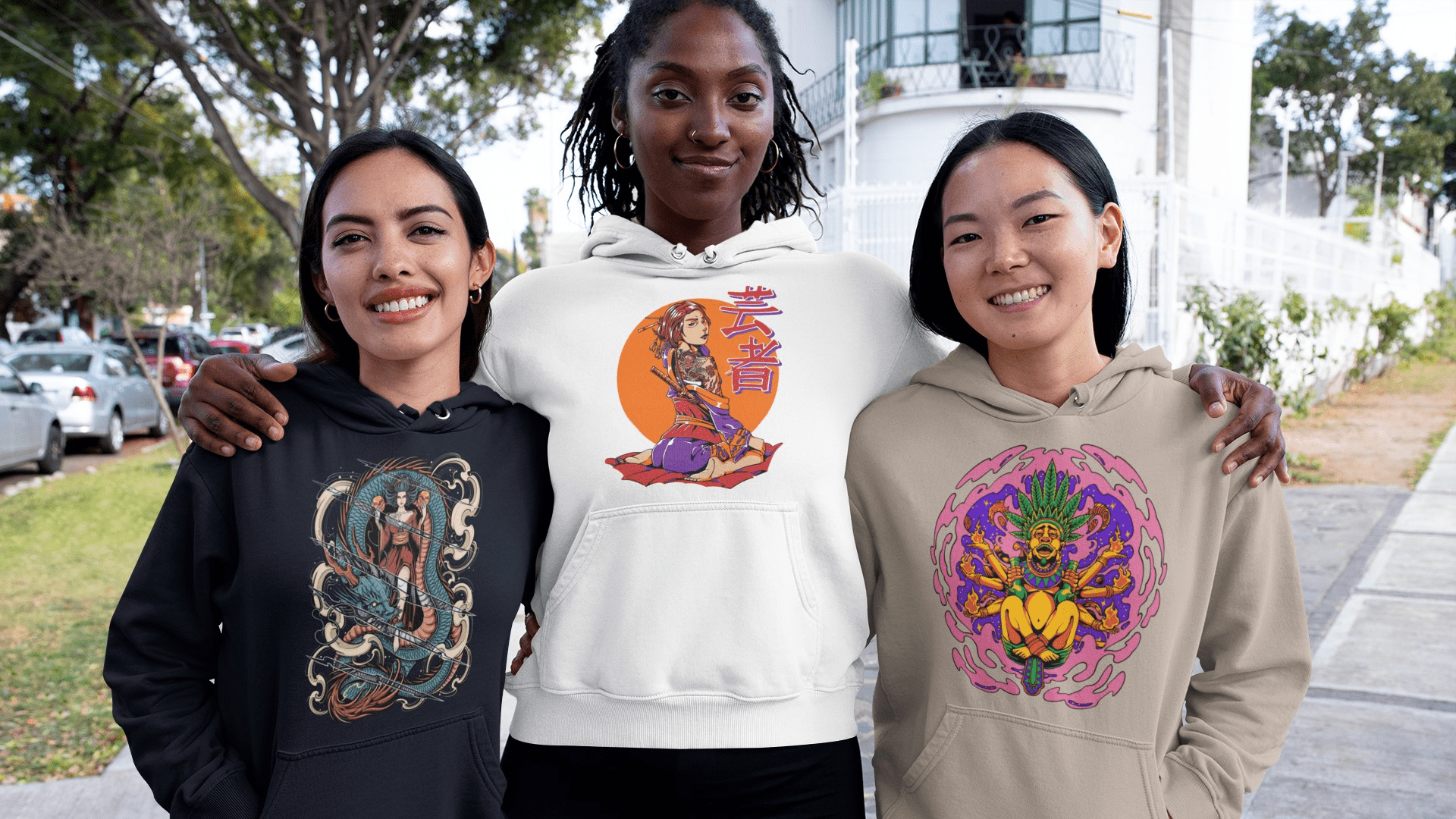In a world full of fast trends and fleeting promises, understanding what you truly pay for when you buy clothes can feel like navigating a maze. At TeeStitch Apparel, our unwavering commitment isn't just to offer beautiful, consciously made clothing; it's to empower you with clarity and control. We believe that truly informed choices begin with transparency, especially when it comes to the numbers on the price tag. This knowledge empowers you to make conscious decisions about your purchases, knowing the true cost of what you're buying.
This commitment, however, presents a constant dilemma for us behind the scenes. We strive to make ethical, premium-quality apparel accessible, not exclusive. Yet, we're constantly navigating the industry's ingrained perception that lower prices mean lower quality, or the pressure to overcharge just to "fit in" with competitors. This creates a real tug-of-war: how do we offer fair pricing without compromising our values or being misunderstood in a market driven by artificial markups? This entire discussion is our way of answering that very question.
The apparel industry, in its vastness, operates on a spectrum of pricing models, each with its own set of unspoken costs. From the ultra-cheap t-shirt to the high-end designer piece, and even within the growing sustainable market, there's often more than meets the eye, or the wallet.
We're going to pull back the curtain on these different approaches, not to point fingers, but to equip you with the knowledge to discern true value, ethical integrity, and sustainable impact. Because ultimately, what you choose to wear carries a story, and you have the power to shape that story responsibly. Your choices can influence the future of the apparel industry, promoting ethical practices and sustainable impact, making you a key player in this transformation.
The Fast Fashion Fallacy: The "Cheap" Lie We Keep Buying
That $15 t-shirt from a big-box store or online giant seems like a bargain, right? It's trendy, it's accessible, and it allows you to refresh your wardrobe without a second thought. But this perceived "deal" is arguably the most expensive clothing you can buy, not just for your bank account in the long run, but for the planet and the people who make it.
The Appeal: Fast fashion thrives on immediacy. It promises instant gratification, mimicking runway trends at breakneck speed and astonishingly low prices. This appeals to our desire for novelty and convenience, convincing us that buying more for less is smart.
The Hidden Costs, Why "Cheap" Isn't Cheap:
- Designed to Deconstruct (Quality & Durability): That low price is often a direct result of cutting corners on materials and construction. Think flimsy fabrics, weak seams, and designs that warp after a few washes. These garments aren't made to last; they're designed for rapid consumption and disposal. However, investing in a durable piece may cost more upfront, but it saves you money in the long run and reduces your environmental footprint.
- Environmental Landfill Burden: The ultimate destination for most fast fashion is the landfill. Millions of tons of textiles, often synthetic blends or poor-quality natural fibers, pile up annually, taking hundreds of years to decompose, if ever. The production itself is resource-intensive, requiring vast amounts of water for crops like conventional cotton, and polluting waterways with toxic dyes and chemical finishes. This constant churn fuels a linear economy of "take-make-dispose" that our planet cannot sustain.
- The Human Toll (Ethical & Social Impact): Behind those incredibly low prices are often hidden human costs. Fast fashion supply chains are notorious for exploitative labor practices, including tragically low wages that trap workers in poverty, unsafe working conditions (like inadequate ventilation, fire hazards, or lack of emergency exits), and excessive, forced overtime. These are the sacrifices made to deliver a garment to your closet at a price point that seems too good to be true, because it usually is.
When you factor in the lifecycle of a fast-fashion garment, from its resource-intensive creation and environmental pollution to the exploitation of labor and its quick journey to a landfill, the initial "bargain" price vanishes. It leaves behind a trail of hidden expenses paid by our planet and its people.
The Premium Brand Paradox: When Price Doesn't Equal True Value
On the other end of the spectrum lies the allure of "premium" and "luxury" brands. Here, the price tag often leaps into the hundreds or even thousands of dollars. The assumption, for many consumers, is that a high price automatically guarantees superior quality, ethical production, or exclusive materials. Sometimes it does, but often, the reality is far more nuanced.
The Perception: These brands cultivate an image of exclusivity, status, and unparalleled craftsmanship. Their marketing budgets are enormous, crafting aspirational narratives that suggest you're buying into a lifestyle, not just a garment. This leads consumers to believe that the high price reflects a proportional increase in the product's inherent worth.
The Hidden Layers of Markup:
- Marketing & Brand Cachet: A significant portion of that high price rarely goes into the garment itself. Instead, it funds glossy advertising campaigns, celebrity endorsements, lavish retail spaces, and the sheer power of the brand name itself. You're often paying a steep premium for the label and the story, rather than the thread count or the ethical journey of the fabric.
- Production Costs vs. Retail Price: It's a common industry secret that the manufacturing cost of many so-called "luxury" items can be surprisingly low compared to their final retail price. Factories that produce for top-tier brands might also produce for less famous, more accessible labels, often using similar raw materials and production techniques. The enormous markup usually occurs at the brand and retail level, leveraging perceived prestige. This isn't to say quality isn't present, but that the price often far outstrips the material and labor cost.
- Ethical Blind Spots & Environmental Footprint: A high price offers no guarantee of a clean conscience. Many premium brands, despite their polished image, may still rely on supply chains with questionable labor practices or contribute significantly to environmental pollution, just like their fast-fashion counterparts. The transparency isn't there, and consumers are left to assume.
So, while a premium piece might last longer or feature a unique design, it's vital to question what you're truly paying for. Is it exceptional quality, or the cost of a sophisticated marketing machine and an inflated brand name? By asking these questions, you can become a more discerning consumer, ensuring that your purchases align with your values and expectations, and making more conscious decisions about the true value of what you're buying.
The "Green Premium" Problem: Is Sustainability Always This Expensive?
As consumers become more aware of the environmental and social costs of fast fashion, the demand for sustainable and ethical alternatives has rightfully grown. And with this demand, a new challenge has emerged: the "green premium," the idea that sustainable products must be exorbitantly priced.
Why Sustainable Products Cost More (And Should):
- True Labor Costs: Paying fair, living wages and ensuring safe working conditions for everyone in the supply chain naturally increases production costs. This is an ethical investment, not an added expense to be minimized.
- High-Quality, Certified Materials: Organic cotton cultivation (like GOTS certified), recycled materials, and innovative, eco-friendly fabrics are more expensive to source and process due to stricter standards, less use of harmful chemicals, and often lower yields compared to conventional methods.
- Responsible Manufacturing: Eco-conscious dyeing processes, water recycling, reduced energy consumption, and responsible waste management all contribute to a higher operational cost for factories committed to sustainability.
- Transparency & Certifications: The audits and certifications (like GOTS, OEKO-TEX, PETA-Approved Vegan) that verify ethical and environmental claims also have associated costs, adding layers of integrity to the product.
The Challenges of the "Green Premium" – Beyond True Costs:
While the factors above do justify a higher price than fast fashion, we identify two distinct issues that contribute to an unnecessarily inflated "green premium" in the market:
1. Market-Driven Over-Inflation:
- Some genuinely sustainable brands, while committed to ethical practices, may price their products higher than truly necessary. Their pricing can be influenced by traditional retail markups, perceived market value, or simply following the lead of other sustainable brands that have already set high price precedents. This approach, even if not maliciously intended, contributes to the perception that ethical choices are inherently luxury items, putting them out of reach for everyday people.
2. Deceptive Greenwashing & Misleading Pricing:
- This issue is a more concerning practice where companies, often those with predominantly unsustainable core operations (like fast fashion giants), introduce a small "eco-friendly" line or a single "organic" item. They then leverage this limited offering to market themselves as a "sustainable" or "conscious" brand overall.
- This token effort allows them to charge an unjustified premium on these "green" items, despite potentially having the financial capacity (from their highly profitable, less ethical lines) to cover the true costs of sustainable materials. It's a calculated tactic to gain market share or inflate perceived value without making systemic changes to their business or passing genuine value to the consumer. It's about deceiving consumers into paying more for a perceived green benefit that isn't fully delivered across the brand.
This excessive "green premium," whether driven by market trends or deliberate greenwashing, creates a barrier. It sends a message that ethical consumption is a luxury only a few can afford, which works against the very goal of building a more sustainable and equitable world. If doing the right thing for the planet and its people is priced out of reach for most, it defeats the purpose.
The Illusion of Generosity: Why Everything Seems to Be "On Sale"
You've seen it everywhere: from the perpetual "% Off!" banner, to the "Flash Sale!" countdown, or the seemingly endless stream of discount codes. It creates a sense of urgency and the thrill of a deal. But what if this constant state of "sale" is less about genuine savings and more about manipulating perception?
Many companies adopt a strategy of inflating their initial prices specifically so they can offer dramatic, consistent discounts. This isn't about passing savings onto you; it's about anchoring your perception of value at an artificially high point. When you see a "50% off" sign, the perceived saving makes the purchase feel like an incredible bargain, even if the discounted price is simply the true intended retail price all along. This tactic capitalizes on psychological triggers, creating a false sense of urgency and making consumers believe they're getting a special deal. Understanding these tactics can empower you to make more informed purchasing decisions and help you avoid impulse buying.
Furthermore, this constant cycle of high price/deep discount serves another purpose: it psychologically adjusts consumers to accept inflated "normal" prices for products that don't inherently cost that much. By consistently showing a high initial price, even if it's rarely paid, companies normalize that elevated figure as the product's true value. When a "sale" concludes and the price reverts to that original high mark, consumers are less likely to question it, having been conditioned to believe that this higher price is what the item should cost, and that any discount was merely a temporary act of corporate "generosity." This subtle conditioning reinforces artificial market values, making the consumer comfortable paying an inflated price that was designed to be discounted in the first place. This long-term effect should raise concerns about the true cost of goods and the ethics of such pricing strategies.
Innovation for Profit, Not Price Reduction
In today's rapidly evolving landscape, technological advancements, particularly in areas like Artificial Intelligence, are revolutionizing how businesses operate. Companies are leveraging AI to automate tasks, optimize marketing efforts, streamline design processes, and even enhance customer interactions, leading to significant reductions in overhead and operational costs. Yet, a critical question often remains unaddressed: are these substantial savings being passed on to the consumer in the form of more accessible prices? In many cases, the answer appears to be no. Instead, the efficiencies gained through these innovations often translate directly into expanded profit margins for corporations, contributing to the very artificial inflation of prices that this post seeks to illuminate. It's a crucial aspect for a conscious consumer to consider: when a company saves, are those savings reflected in the value offered to you? Remember, as a consumer, you have the power to influence corporate practices and ensure that these savings benefit you.
TeeStitch's Approach: Our Commitment to Fair Value
At TeeStitch Apparel, we aim to redefine what "premium" means. For us, it's about uncompromising quality and genuine ethical integrity, offered with a transparent and accessible pricing philosophy. We refuse to participate in the industry's culture of artificial inflation, whether it's from fast fashion's hidden costs, luxury's brand markups, or the sustainable market's green premium.
Our pricing reflects the true investment in:
- Ethical Sourcing & Fair Labor: Partnering with industry leaders like Stanley/Stella ensures every garment meets stringent social and environmental standards from seed to stitch.
- High-Quality, Certified Materials: We choose GOTS-certified organic cotton and recycled blends for durability, comfort, and minimal environmental impact.
- Exclusive Art, Fairly Compensated: Each design is a unique, thought-provoking piece created by talented artists who receive fair compensation for their work.
- Conscious Production (Print-on-Demand): We only create what's ordered, eliminating waste and overproduction, a direct cost saving we pass on in our pricing.
- Real Impact: A portion of every sale goes directly to One Tree Planted, making your purchase a force for positive environmental change.
We meticulously price our products to ensure the sustainability of our mission, the fair treatment of everyone involved in our supply chain, and the continued ability to offer high-quality, ethically produced apparel. Our goal isn't to maximize profits at the expense of our community or the planet. Instead, we strive for ethical accessibility, making it possible for you to choose clothing that aligns with your values, without paying an artificial premium.
A Call for Conscious Commerce
For us, it's always people and planet before excessive profit. We price for a sustainable future for everyone, not for extravagant returns for a select few. We share these values with you, our community of conscious consumers and ethical business supporters, and invite you to explore our collection, confident in the integrity of every thread and every price tag.
We understand that in any market, businesses operate to generate revenue, that's how they sustain their mission, compensate their teams, and continue to innovate. This is not about demanding the unsustainable or hindering growth. Instead, it's about advocating for a fair exchange: where consumers are not asked to pay artificially inflated prices, and companies genuinely price for true value, ethical practice, and long-term sustainability. It's about ensuring a relationship built on mutual respect, where consumers are empowered to make informed choices, not exploited, and businesses thrive through integrity, not manipulation.
What are your thoughts on these industry practices? Have you noticed similar patterns, or do you have insights into why companies adopt these tactics? We eagerly await your constructive perspectives and invite you to share your experiences and discoveries in the comments below. Let's build this conversation together.







